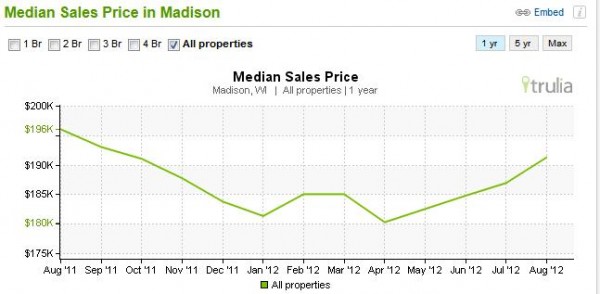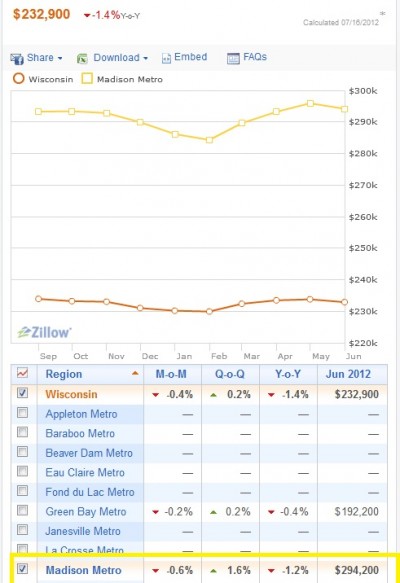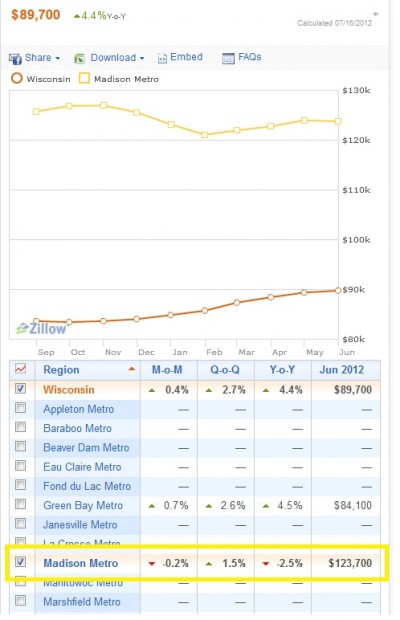Is The Real Estate Market Really Rebounding?
I have been asked by both my own clients, members of REOPro and the Mather Network, as well as my vendor partners about my thoughts on the real estate market rebound.
My first reply is always to remind people that real estate is directed correlated to unemployment and therefore, as long as unemployment is high, we will NOT have a rebound in real estate.
Normally, I get a lecture about how local real estate prices are on the rise and inventories are down so, isn't that proof enough that we are in a rebounding real estate market?
Sure, real estate markets, like any market, is a servant to the law of supply and demand and yes, when supply is down and demand stays the same, prices go up. Yes, that is happening so, if that is all you measure a rebound against, sure we are rebounding. The problem is, it's foolish to not ask why. Why is supply low?
With a continually high unemployment rate, shouldn't we be seeing the same amount of foreclosures? Sure we should but, why aren't we? I checked with my own local Sheriff's department to see how many foreclosures they did in 2013 so far. I was told, "We have done more foreclosures in 2013 than we have any time before." So, where is all the inventory....why do we have a inventory shortage. In fact, how is that possible when unemployment is at 2008 levels, the height of the housing crisis and when the Sheriff's department is reporting record evictions?
These are all important questions and really need to be answered because, from what I can tell, it appears housing is going through another bubble of sorts. Obviously something is artificially holding inventory off the market to manipulate the law of supply and demand but, for what purpose, what end game?
So, I had to look and see who are the largest holders of default property, HUD, Fannie Mae, Freddie Mac, FDIC, VA, and Bank of America. Well, what do we know about these companies / quasi government entities......all controlled by the Federal government. I had an insider over at Freddie tell me that they have all of these different programs now....namely, deed-in-lease, to keep homeowners in homes and therefore, avoid the foreclosure all together. She went further to tell me that even though they are avoiding the foreclosure, it has no...ABSOUTELY NO, reflection on the ability or inability of the previous homeowners, now renters capacity to pay a mortgage or any of the actual debt due on the mortgage.
She was just speculating but, she went on to tell me that in her opinion, it's likely that 85% or more of those in the deed-in-lease program and others like that, are just buying time because they will never be able to buy the home back, pay off any of the debt or be able to go out and purchase another home any time soon. She and I agreed, it was just a way to keep property off the market even though, without any intervention, it would have been on the market months, if not years ago.
Why would this be happening, why would the government want to artificially inflate prices by keeping property off the market?
1. Raise Property Values: It's not even a question amongst the minds of those in the know, the government wants to inflate prices. The reason is because they are losing so much money through Fannie and Freddie because of foreclosures and short sales that, it's just simply best for them to hold the property, decrease inventories, manipulate the law of supply and demand, raise prices and trickle the REO holdings back on the market so that they can sell for more than the debt owed.
2. Elections Have Consequences: Whichever political party can go out to voters and say that they are responsible for housing prices being on the rise, they will get re-elected....at least that it the thought.
All in all, the housing rebound isn't real, it's artificial for a variety of reasons, not just the two I gave above. The truth of the matter is, many feel this heavy handed control by the government of housing markets is absolutely necessary to prevent the further collapse of the US economy. Others see it as a prolonging of the inevitable and a violations of the free markets. Either way, with increasing debt, increasing unfair manipulations of the market, higher taxes, higher cost of living and higher energy and commodity prices, housing will begin becoming more and more volatile. I believe the days of housing being a safe investment are over. So many outside factors are now playing in the market, regardless if they are suppose to be there or not, it's just not as simple as it was just 10 years ago. Buyers are going to have to be much smarter before the purchase and understand that a minimum of 20% down and staying in the home for a minimum of 5 years might be the only way to get your money back, let alone make any money.











